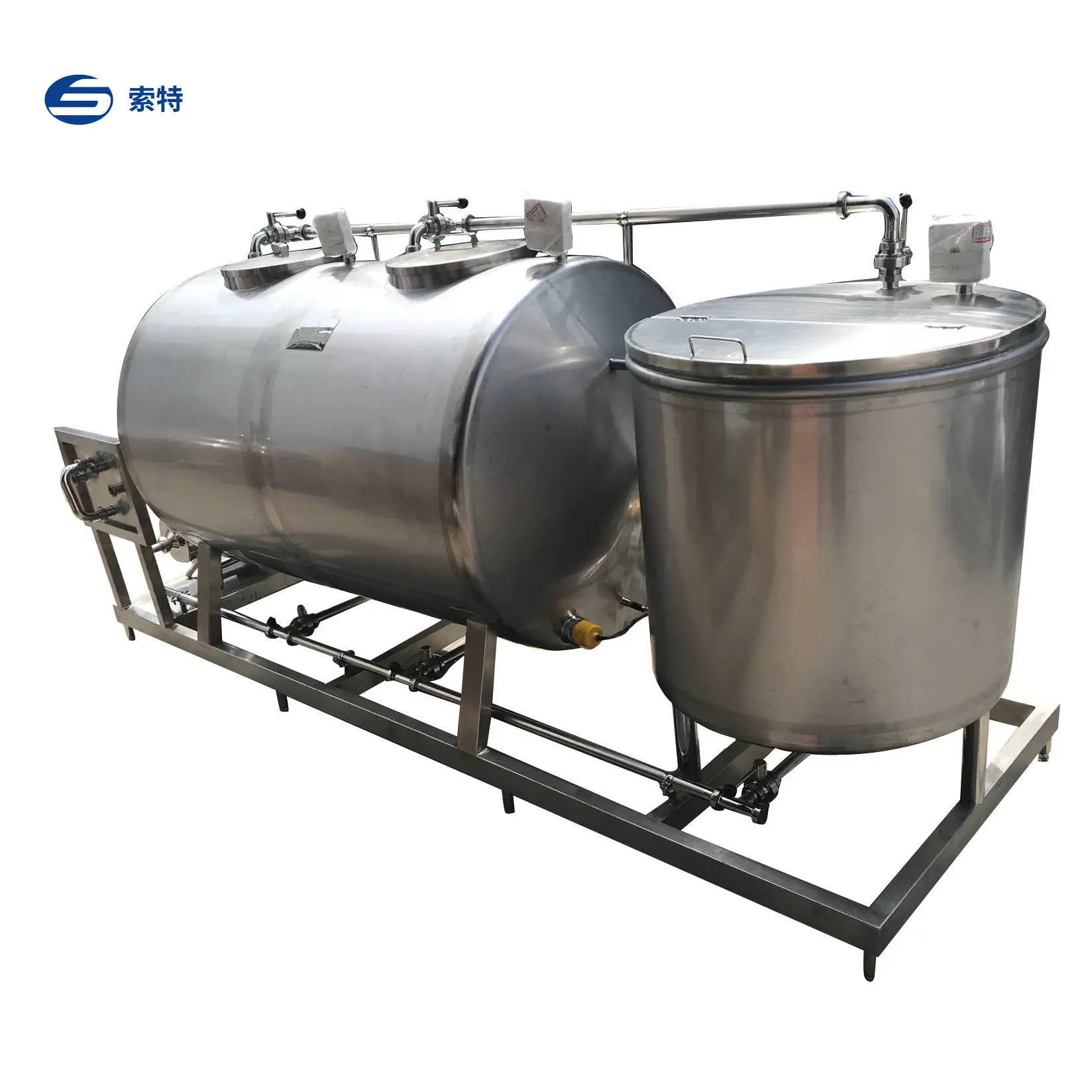Food-grade High-efficiency Automatic CIP Online Cleaning System
Cleaning in Place (CIP) is a new and effective cleaning technology widely used in dairy plants as well as beer, beverage, coffee, sugar and other industries. Clean-in-place technology is a technology where the equipment is cleaned in situ without the need to disassemble equipment, pipes, valves, etc. It has the following features:
(1) Local cleaning, easy to operate, work safety, low labor intensity, high work efficiency.
(2) Thorough cleaning, and can simultaneously achieve the purpose of disinfection and sterilization, to ensure health requirements, is conducive to product quality improvement.
(3) Cleaning inside piping, can account for less workshop area.
(4) Detergent can be recycled, high utilization, steam and water are also more savings.
(5) Less wearing parts, the device has a long service life.
(6) Suitable for large, medium and small types of equipment cleaning.
(7) Cleaning work can be programmed and automated.
Advantages: Save operating time and improve efficiency
What is CIP
Since the 1980s, the cleaning of equipment has been replaced by machinery. Especially dairy, beverage and other continuous operation plants using pipeline. In many dairy plants, automatic cleaning in place is used, that is, the water and washing liquid used for rinsing are carried out in a closed circuit cycle in the pipelines and production lines of the equipment, without disassembling the equipment. This technique is called cleaning in place (CIP), also known as cleaning positioning or cleaning in place.
CIP is widely used in food and beverage production enterprises with a high degree of mechanization such as beverages, dairy products, fruit juices, fruit pulps, jams, and alcohol. In-situ cleaning does not require dismantling or moving the device, using detergent and washing water to flush the inner surface of the equipment with a high-speed liquid flow, forming a mechanical action to wash away the dirt. This cleaning is effective for pipes, pumps, heat exchangers, separators and valves, etc. It can be used for cleaning and purification of production equipment with stricter hygiene requirements.
Components of the manual ClP cleaning system
Description:
1. This set of equipment is amanual ClP cleaning system.
2. Supporting composition: 500Lacid tank, 500L lye tank, 150Lconcentrated acid andconcentrated alkali tank each (PEanti-corrosion material, including3T output pump, 3T self-primingreturn pump, conductivitydetector, stainless steel bracketmain equipment between pipesand valves(external Pipes linesare not included).
3. Manual stainless steelnon-explosion-proof controlcabinet: conductivity meter, thestart and stop of the output andinput pumps are controlled bykeys.
Two Tank System Three Tank System Four Tank System
- 1st tank is for water(pre-rinse or final rinse)
- 2nd tank for caustic wash solution
1. Tanks for water,caustic,and acid soltions
2. Allows for pre-fill and heat of solutions
3. Caustic and acid washescan be returned and re-used for future cycles.
- 4th tank allows for recovery and re-use of solutions with the convienience of individualready-to-go caustic andacid solutions
Product parameters
|
Brand |
SUOTE |
Type |
Semi-automatic |
|
Product name |
Siamese Automatic Washing CIP Cleaning System |
Processing Types |
Beer,Beverage,Milk |
|
Material |
SUS304/316L |
Core Components |
PLC |
|
Processing Types |
Beverage/diary/medical |
Voltage |
Local Requirement |
|
Cleaning type |
BLiquid Cleaning |
Power |
1.5-2.2KW |
|
Applicable Industrial |
Manufacturing Plant, Food & Beverage Factory, Food & Beverage |
Capacity |
Custom-made |
|
Type |
Semi-automatic |
Dimension(L*W*H) |
3000*1400*2000mm |
Operating Procedures
Purpose To standardize the CIP cleaning procedures, maintain equipment, and ensure continuous and normal production.
* Scope of application: CIP cleaning section.
product display






